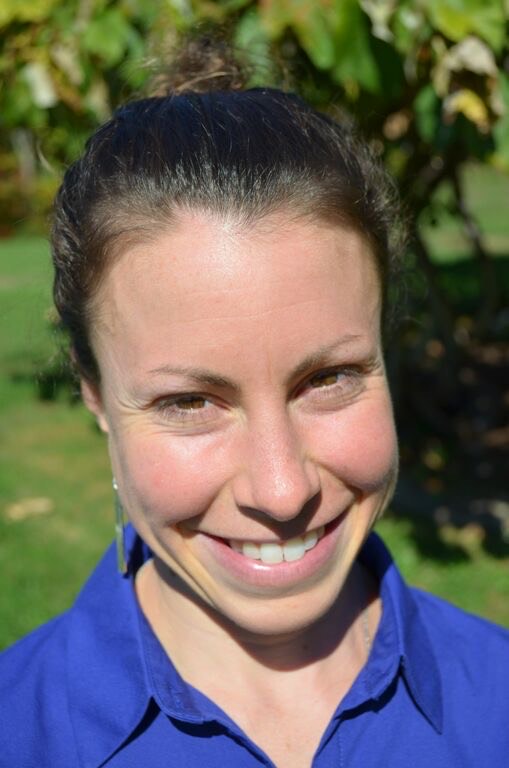Is there any benefit to doing yoga in bed?
A physical therapist breaks down why you should consider doing yoga in bed
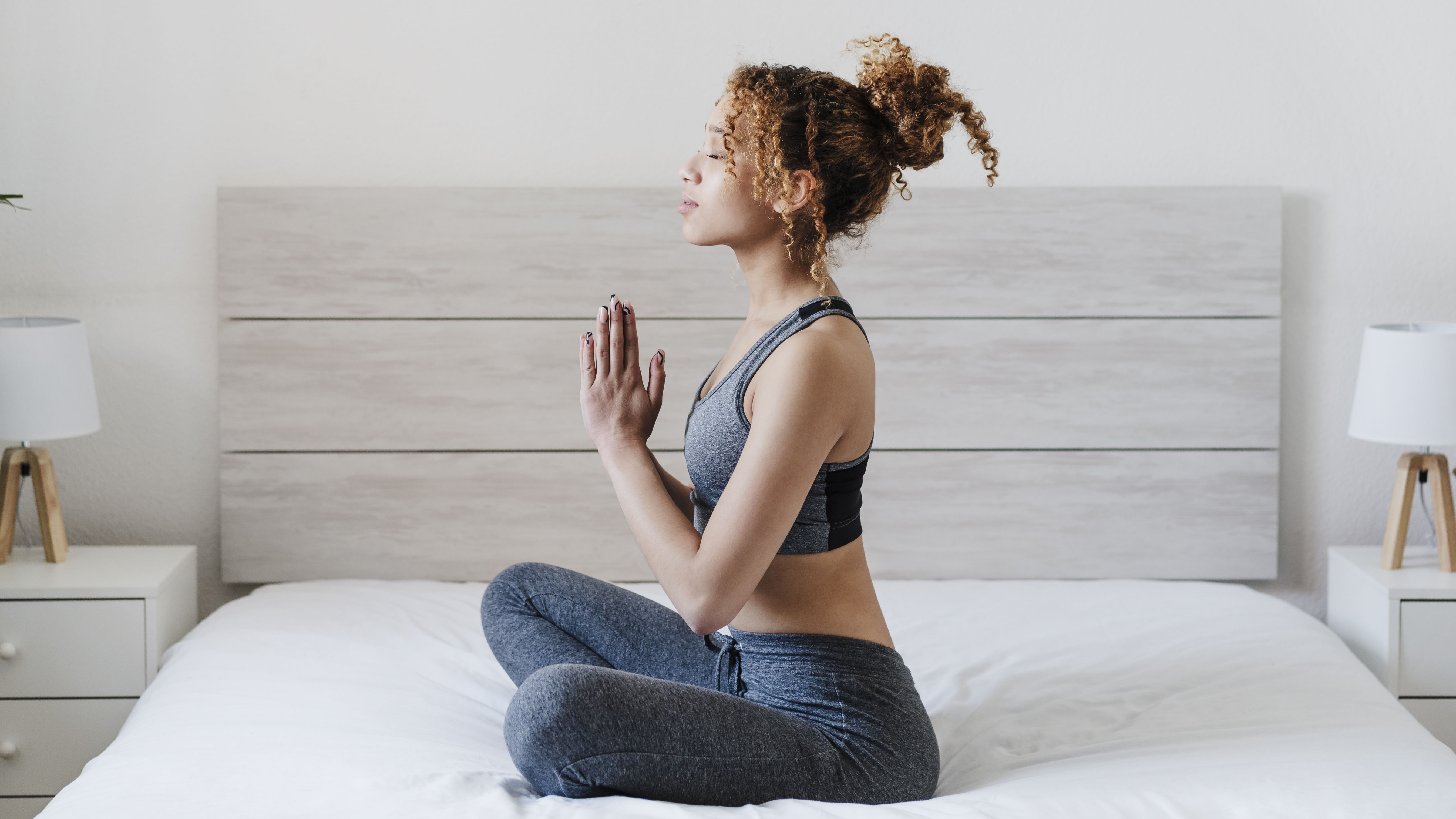
When most people envision doing yoga, they picture themselves rolling out one of the best yoga mats and performing poses on the floor. However, the practice of yoga is diverse and you can actually perform yoga in bed. Doing yoga in bed not only spares you from having to buy a yoga mat or get up and down off the floor, but can also provide unique physical and mental benefits as well.
To learn more about the benefits of doing yoga in bed, we spoke to Shannon Leggett, a physical therapist and certified yoga teacher.
What does yoga in bed entail?
Many people only think of the physical poses of yoga, which are called asanas, but this is just one part of the practice. Yoga includes other equally important facets, such as breathwork (pranayama) and meditation.
As meditation has been linked to things like lowered blood pressure (according to a review in the Journal of Psychiatric Research) and improvements in anxiety (according to a review in Psychological Medicine) it could well be worth practicing first thing in the morning, before you get up.
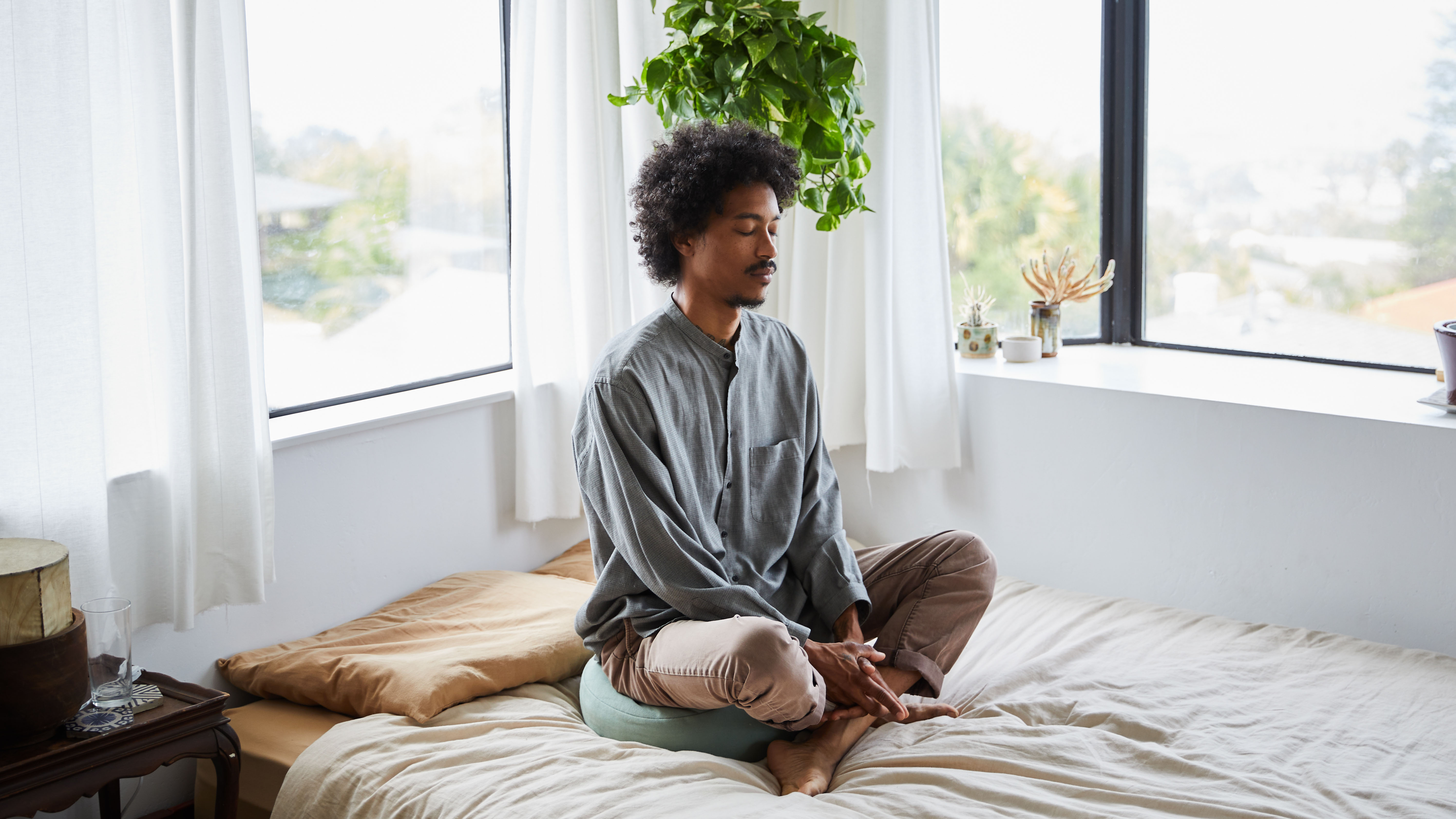
“Yoga in bed could also be good for mobility or stretching purposes,” says Leggett, adding that yoga in your bed can be a great way to ease pain and stiffness. It acts as a warm up before you start moving around.
Leggett says that yoga in bed can also be used to support sleep. “We know how important it is to get 7-9 hours of sleep a night. However, 62% of people worldwide report they don’t get as much sleep as they’d like,” she says.
“One of the ways to improve the ability to fall asleep and get quality sleep is to develop a sleep routine. Instead of phones or TV in bed, adding [bed] yoga to a nightly routine may help you to unwind from the day and aid sleep.”

Shannon Leggett is a physical therapist and certified yoga teacher. After graduating with her Master’s Degree in Physical Therapy in 1999, Shannon began her career in a small community hospital. Since then, she's worked in several outpatient clinics in NYC and helped patients recover from all kinds of injury. She now combines her knowledge and passion for yoga with her physical care practice.
Does yoga in bed have any effect?
Leggett says one of the primary benefits of yoga in bed stems from ‘mindfulness.’
Mindfulness simply means being aware of the present moment; meditation actually falls under the umbrella term of ‘mindfulness.’ And like meditation, the practice has been linked with health benefits. One randomized control trial, written about in the Journal of Clinical Medicine, found that a mindfulness program can improve anxiety and depression.
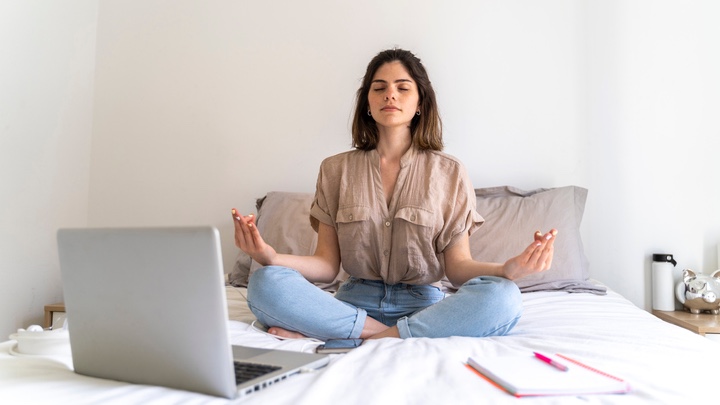
According to Leggett, breathwork exercises with yoga assist with mindfulness because they help you focus on being present and quiet your mind. “Breathwork directly stimulates our vagus nerve, which is responsible for bringing us into a state of relaxation,” she says. And, what better place to practise breathwork than in bed.
“The vagus nerve oversees bringing our body back to rest and digest mode,” she says. “Regular practices, like yoga, will improve your ability to recover from a stress response, which will improve mental, physical and emotional health.”
It’s important to frame yoga in bed as what it is, says Leggett: more of a restorative or nourishing practice rather than an intense workout. “It should not take the place of a regular exercise routine,” she says. “You still need to get your cardio and strength training in for all the health reasons!”
Yoga poses for bed
Leggett shares a few easy yoga poses you can do in bed:
Child’s pose
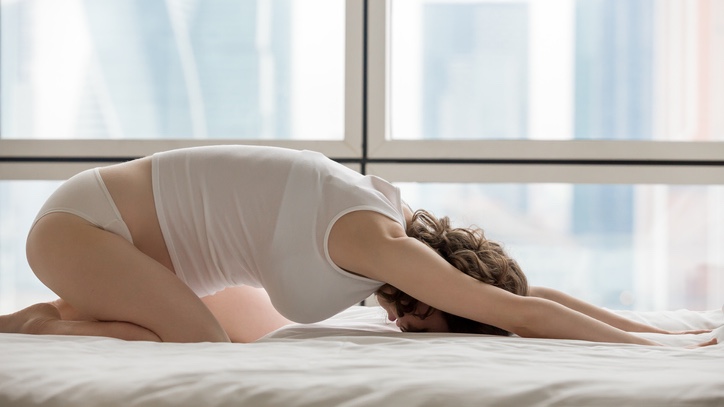
- Come onto your hands and knees, bringing your big toes together behind your body. Separate your knees slightly, if possible.
- Sit your hips back towards your feet as you reach your hands and arms forward in front of your body.
- Allow your head to relax on the bed, or you can place a pillow or rolled towel under your belly and head (or just your head) for comfort.
- Allow your inner thighs to relax and pelvic floor muscles to release.
- Hold this pose for as long as you’d like.
Cat/cow stretch
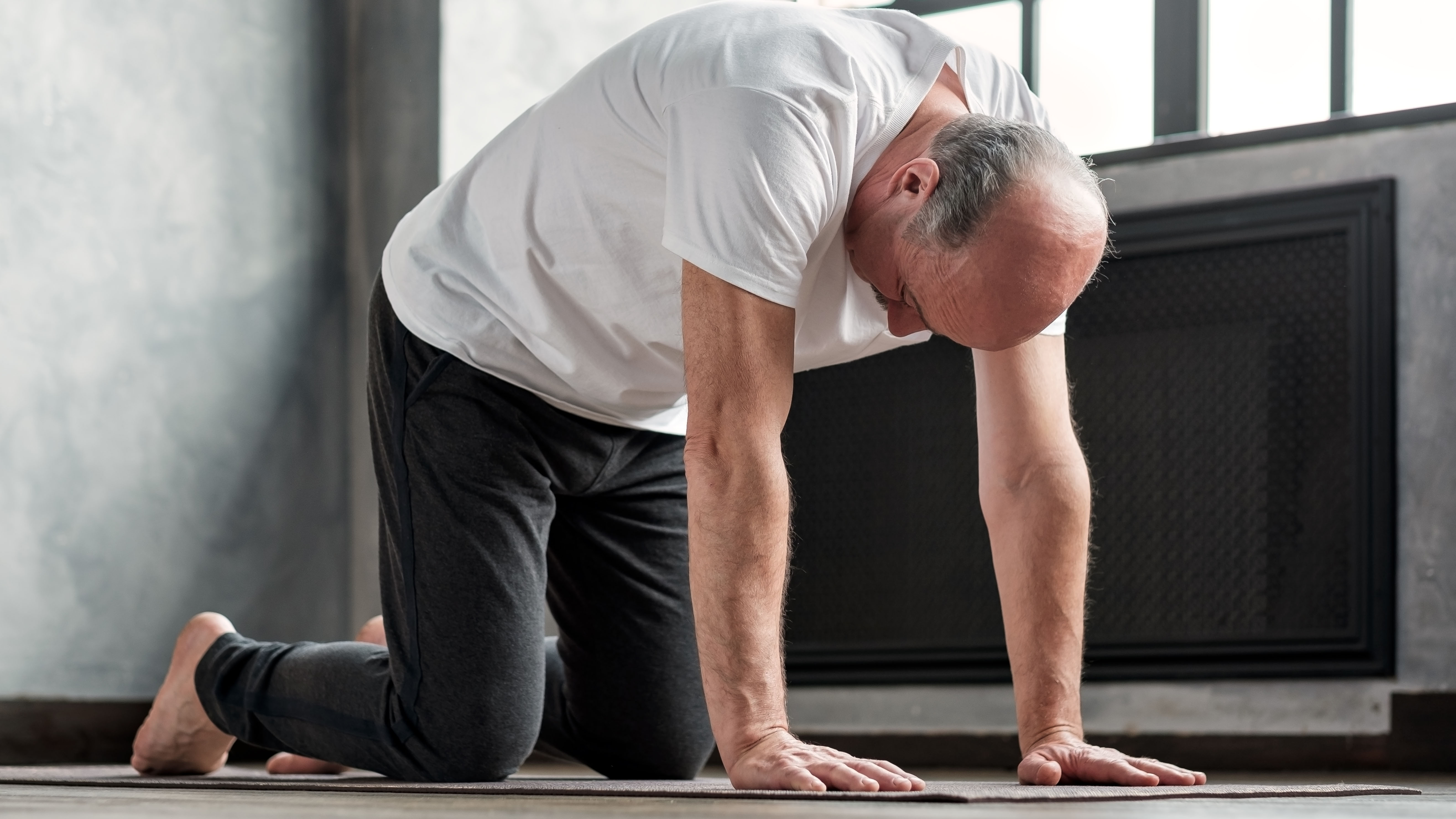
- Kneel on your mat on all fours so that your hands are on the floor below your shoulders and your knees are on the floor under your hips. Your spine should be neutral with your back flat and abs engaged.
- Take a deep breath in.
- As you exhale, draw your belly button in towards your spine and round your spine up towards the ceiling. Tuck your chin towards your chest, and let your neck release. This is your cat position.
- Inhale, arching your back and letting your belly relax. Lift your head and tailbone up towards the ceiling. This is the cow position.
Bridge pose
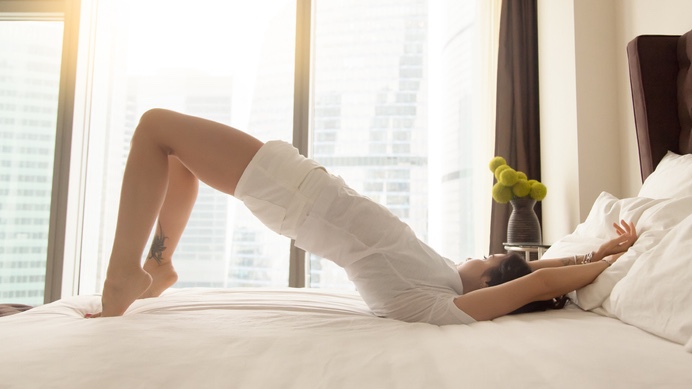
- Lie on your back with your knees bent and feet flat on the floor as if you were going to do abdominal crunches. Cross your arms over your chest.
- Press through your heels to lift your hips up until your body is in a straight line from your knees to your shoulder blades.
- Hold for a full breath, contracting your glutes and hamstrings.
- Hold for 5 breaths and then lower back down and repeat.
Happy baby pose
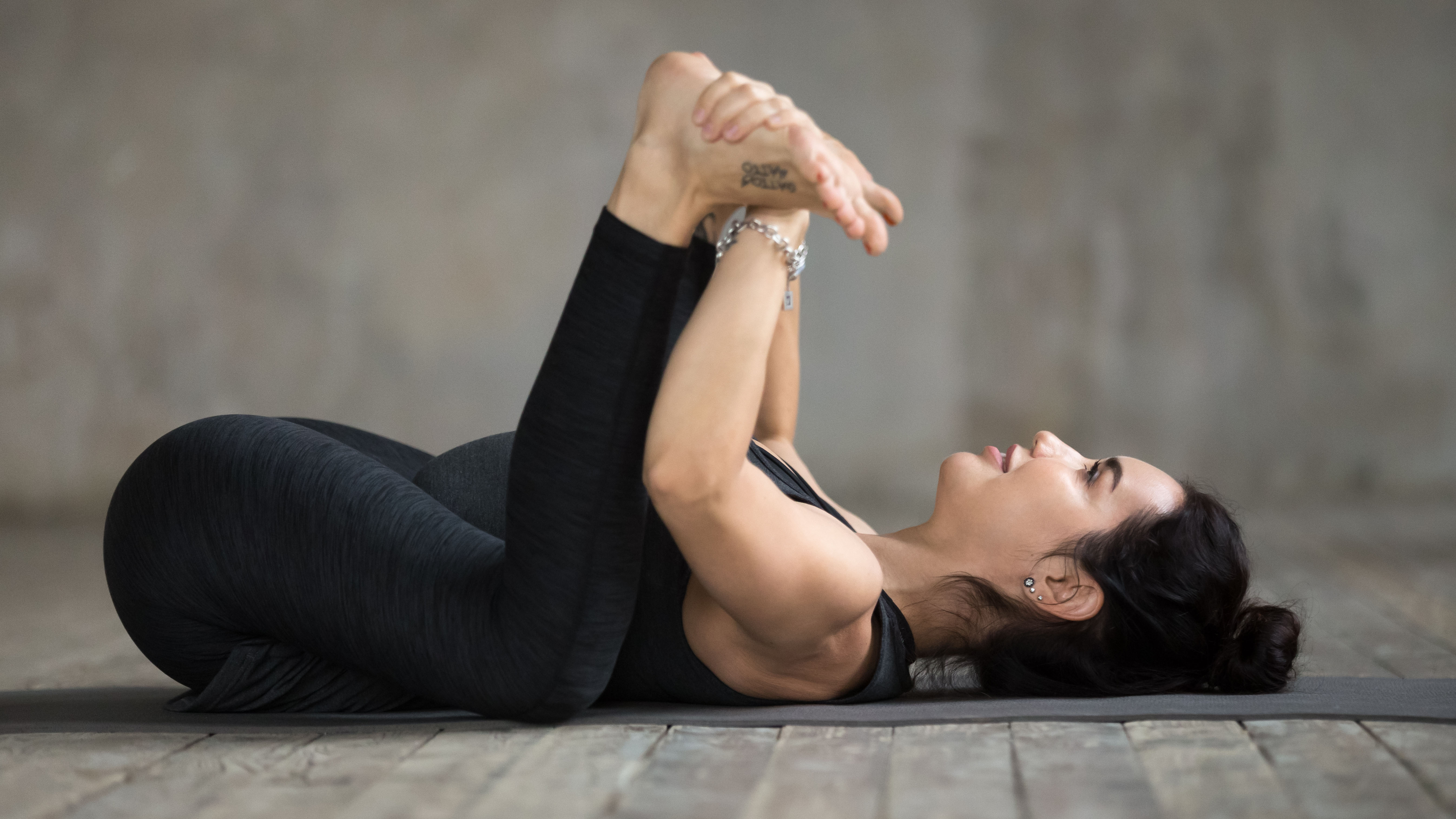
- Lie on your back and reach for either the outside of your feet or outside of your knees depending on your flexibility.
- Gently draw your feet out to the side as you bend your knees or draw your knees towards your chest and then out to the side.
- Hold this position for 20-30 seconds, allowing the body to relax.
- Repeat 2-3 times.
The takeaway: yoga in bed
Although yoga in bed shouldn’t be thought of as an athletic activity or vigorous workout, it can be a great way to move your body and connect with your breath to ease stress and feel more loose and relaxed. Leggett says that your bed might be too soft to do some poses, so it’s best to keep things simple and embrace the fact that you’re in your bed.
“Use your pillows and blankets to support poses to make them even more restorative. Fold a blanket and put it under your knees for savasana or supine bound angle pose. Use a blanket horizontally under the shoulder blade for a gentle chest opener. Use a pillow between your knees and chest in child’s pose,” she says. “Be creative, listen to what your body needs/wants, and enjoy.”
Sign up for the Live Science daily newsletter now
Get the world’s most fascinating discoveries delivered straight to your inbox.
Amber Sayer is a fitness, nutrition, and wellness writer and editor, and contributes to several fitness, health, and running websites and publications. She holds two masters degrees—one in exercise science and one in prosthetics and orthotics. As a certified personal trainer and running coach for 12 years, Amber enjoys staying active and helping others do so as well. In her free time, Amber likes running, cycling, cooking, spending time outside, and tackling any type of puzzle.
